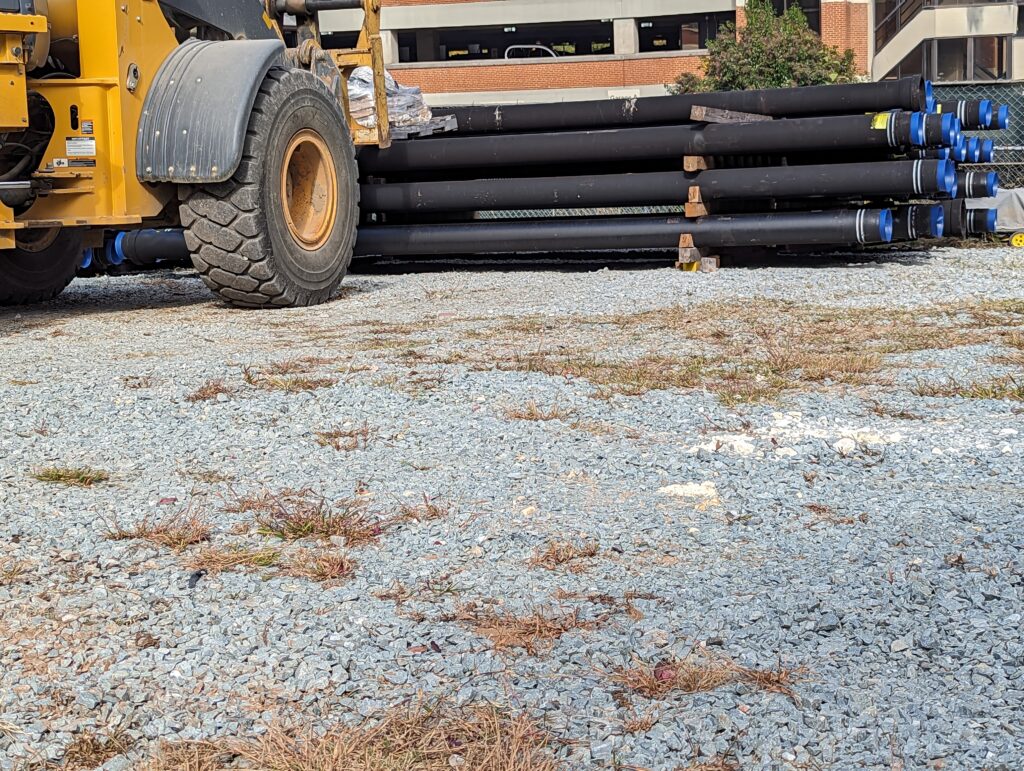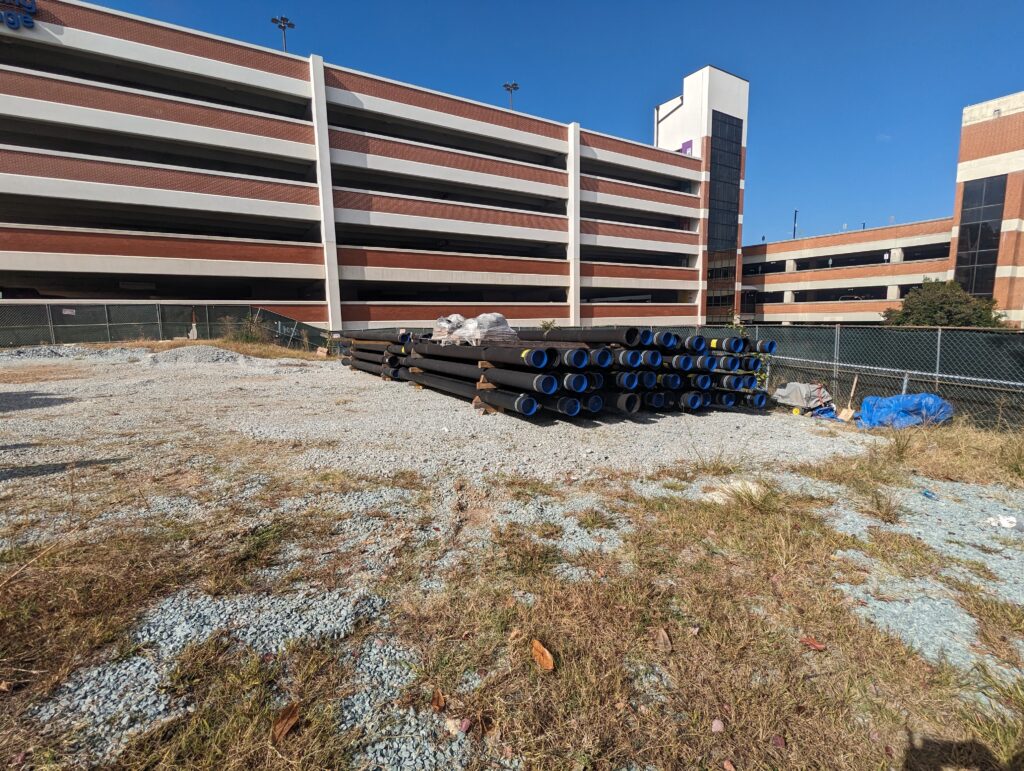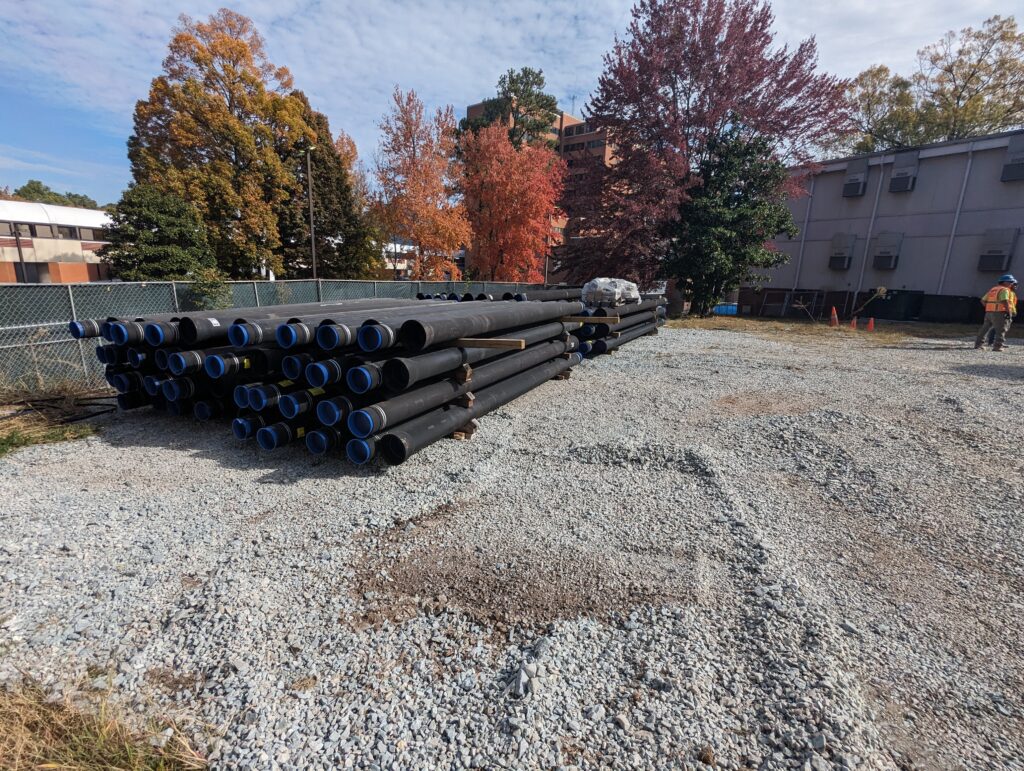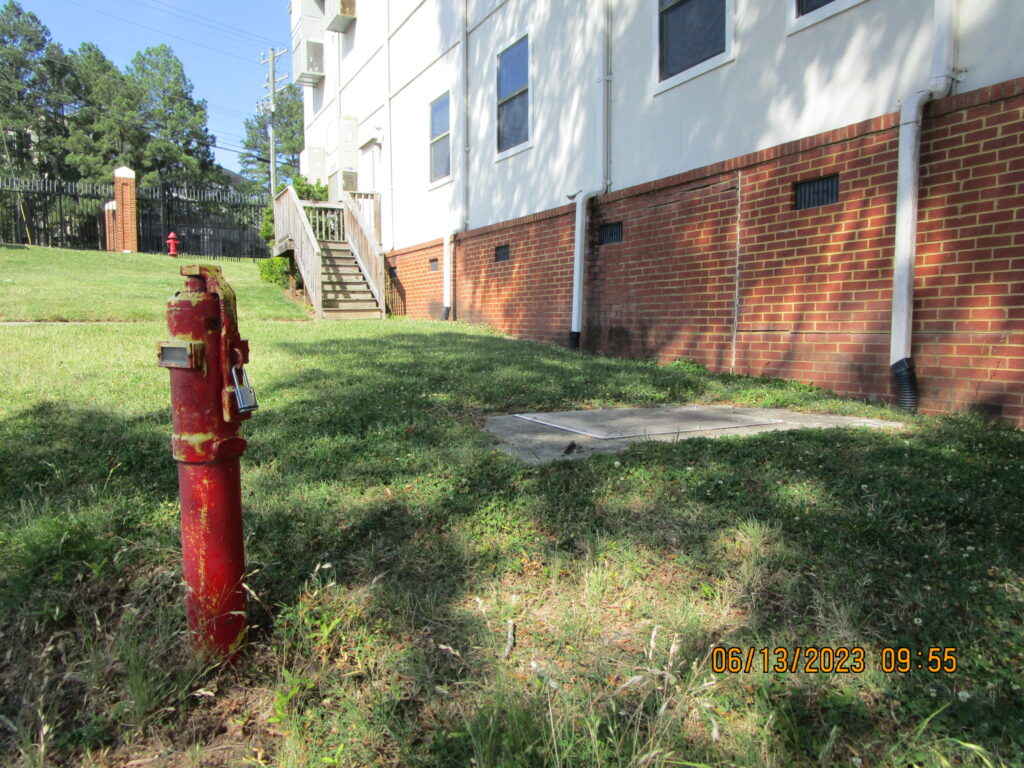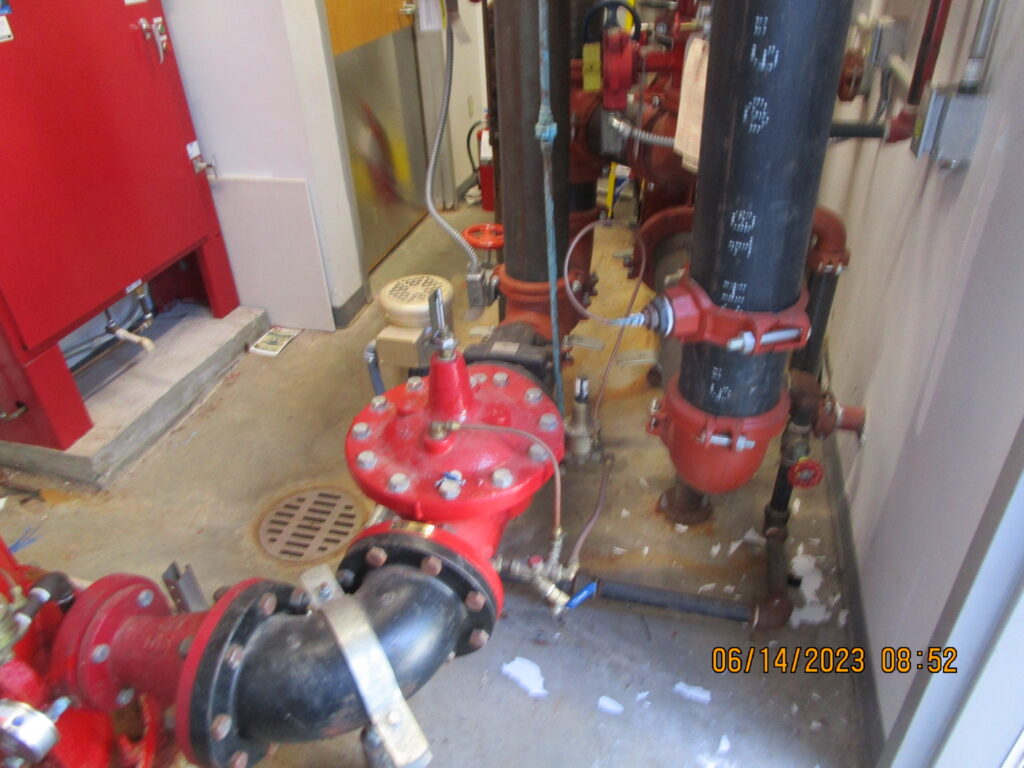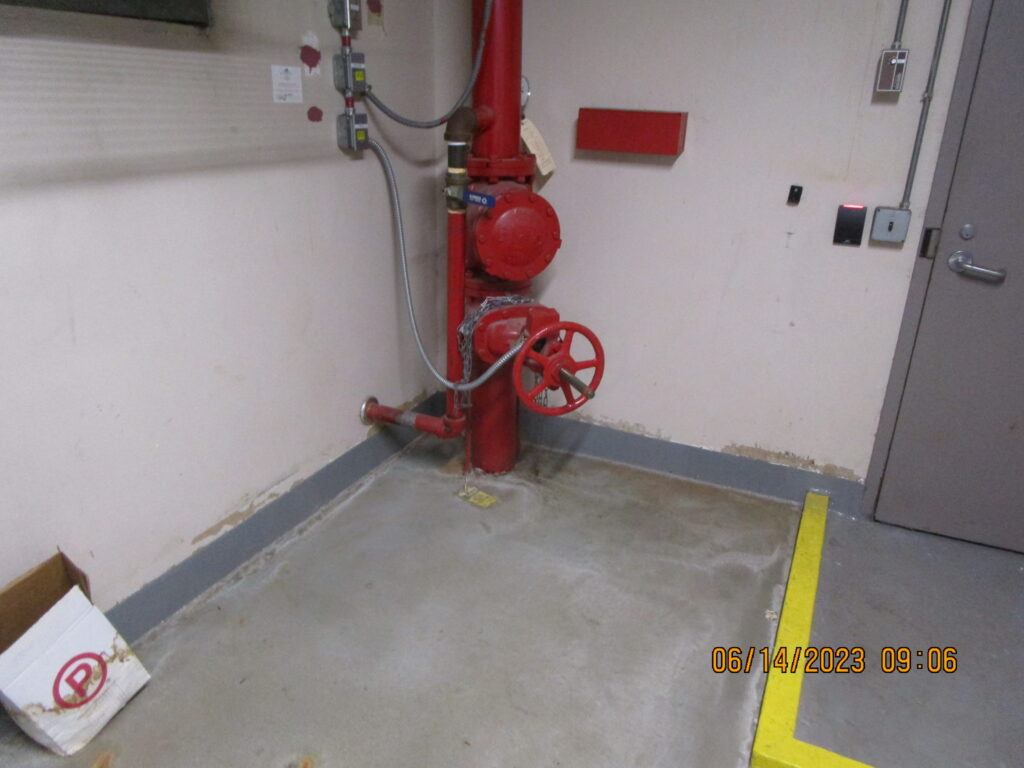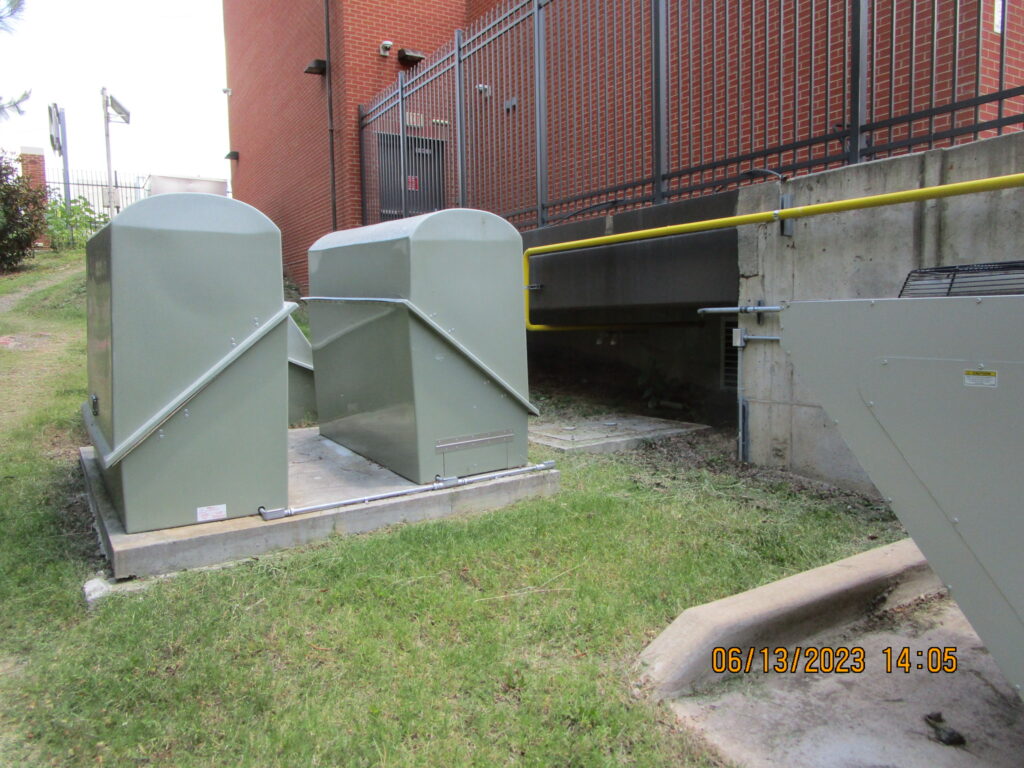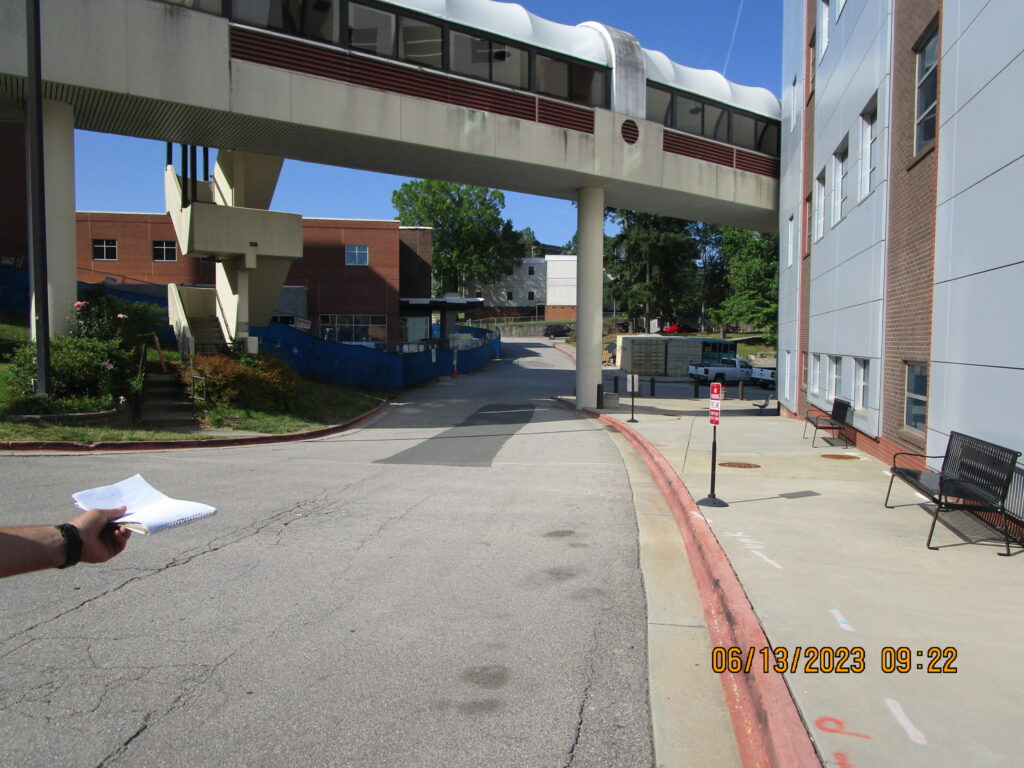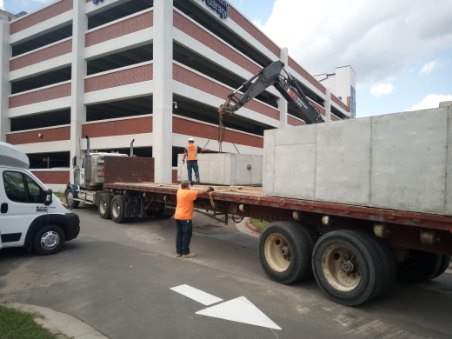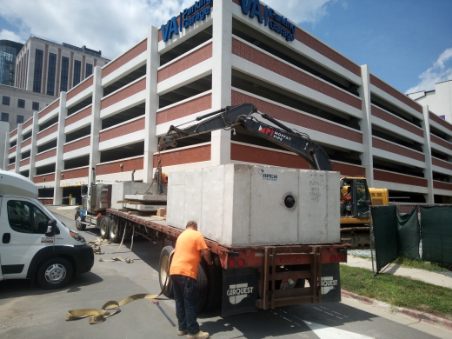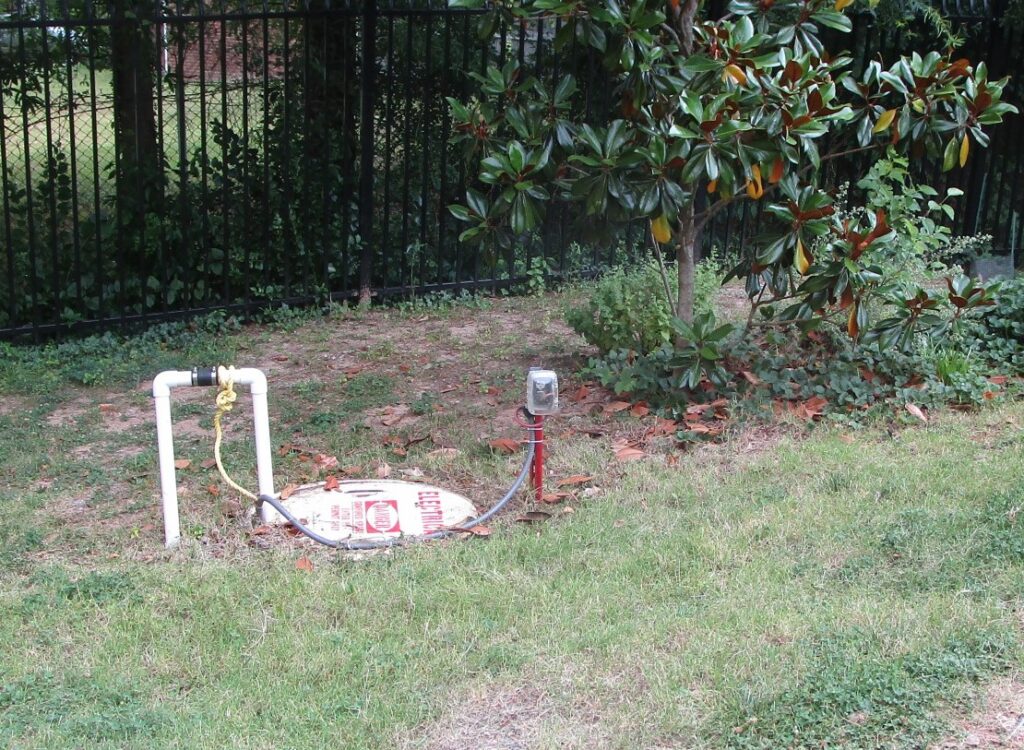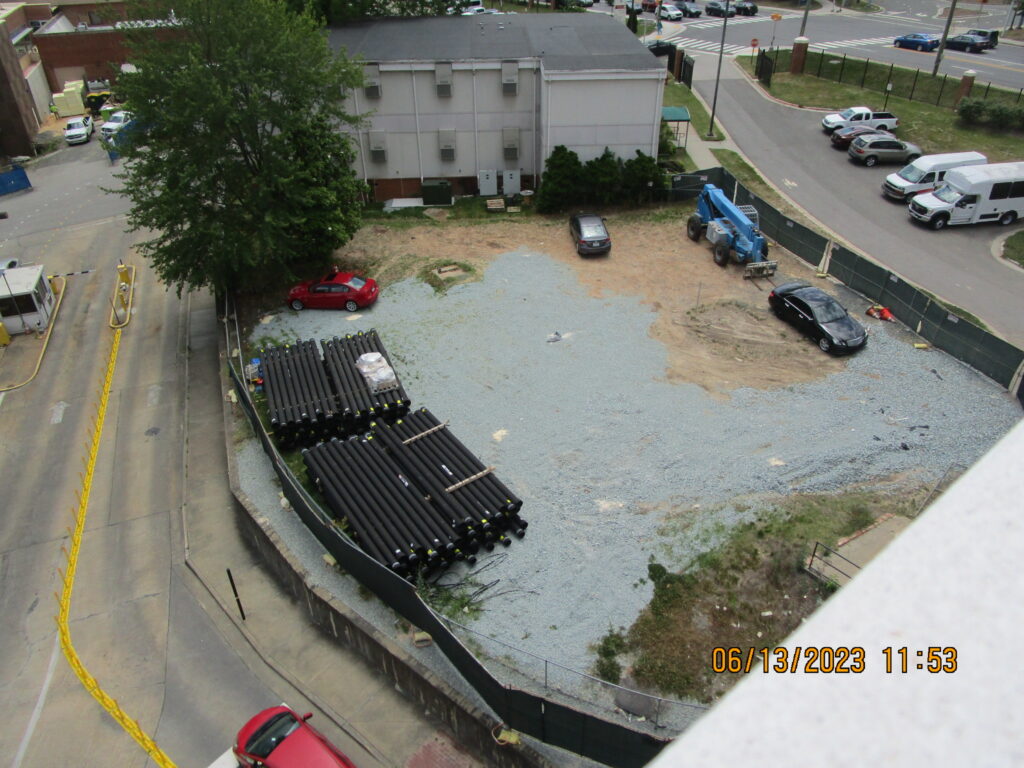The Durham VA Medical Center, located at 508 Fulton Street in Durham, North Carolina, has a rich history of providing comprehensive healthcare services to veterans. Established in 1953, the medical center has become a significant part of the Durham healthcare landscape, serving approximately 70,000 veterans annually. Over the decades, the medical center has expanded its facilities and services to meet the evolving needs of the veteran community, including specialized care in areas such as cardiology, oncology, and mental health. The site is adjacent to the prestigious Duke University Hospital, forming part of a bustling medical campus known for its cutting-edge medical research and treatment facilities. This proximity fosters a collaborative environment, allowing for enhanced medical services and research opportunities.
The Durham VA Medical Center is undertaking a significant infrastructure project to replace its aging main water line, including potable and fire line feeds to each building. This project aims to ensure reliable and safe water delivery by installing a robust system designed to serve the campus for the next 100 years. The work involves installing over 7,600 linear feet of new ductile iron pipe for both domestic water and fire water mains, removing approximately 3,500 linear feet of existing lines, and grouting about 2,200 linear feet of abandoned pipe.
The additional project scope includes extending the fire control system to integrate the new field devices into the existing building fore control system, adding necessary electrical infrastructure, and providing power to each RPZ/RPDA with heaters for frost protection. Restoration will cover concrete pavement, curbing and sidewalks, landscaping, asphalt paving, and pavement markings. The project also involves multiple cut-in tee taps to the City of Durham’s water main, with some using the jack-and-bore method under a state road and requiring two major water main outages closely coordinated with the City of Durham.
Executing this project in an operational hospital environment presents many challenges as this is a highly invasive project to the VA’s operations. Careful coordination of shutdowns and service interruptions is crucial to minimize impacts and ensure uninterrupted service. The property’s proximity to Duke University Hospital underscores the project’s significance. Strict adherence to VA security, safety, infection prevention protocols, and OSHA, NFPA, and NSF standards ensures a safe work environment and maintains essential hospital services during construction.
